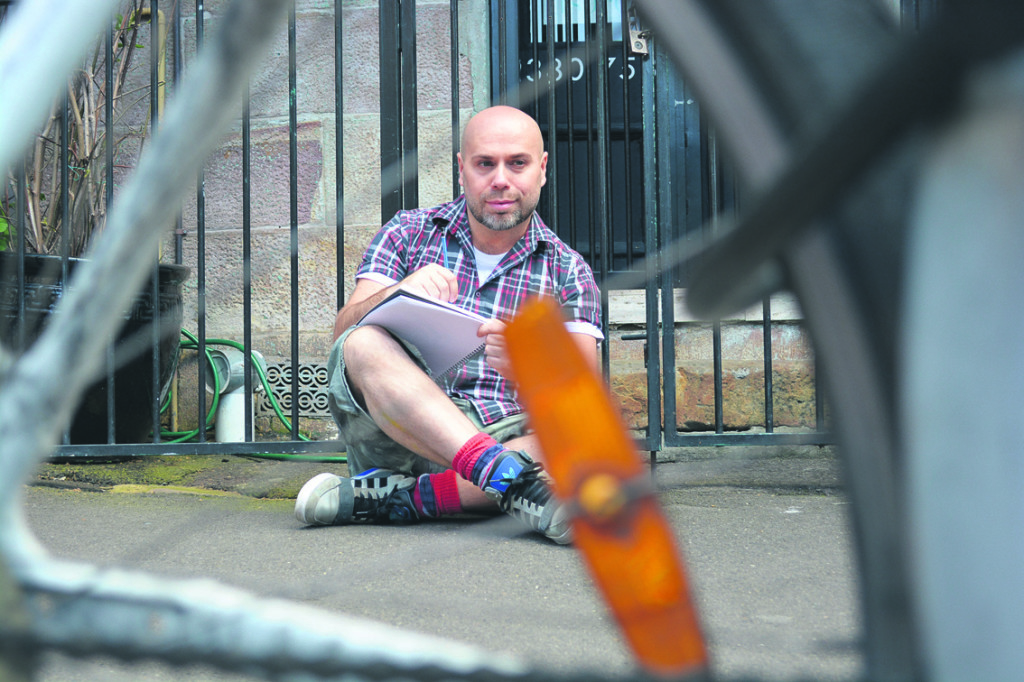Freedom (If You Want It) comprises colourful bicycle portraits on canvas.
“I’m normally a portrait painter and all my past exhibitions have been portrait shows,” the artist explains. “I always try to present people in a way that they’re very approachable and they’re very human, so we can see the [points of difference and similarity] … so we can see where we fit in, and what community we’re in. With bikes, they all have a different personality … and the works represent different aspects of beauty.”
Whitworth has lived in Surry Hills for seven years. He first arrived in Sydney 15 years ago and is “very happy” to call Sydney home. “It has lots of good things going on,” he says. His rooftop studio in Surry Hills, atop a stairwell adorned with mirrors, is brightly lit and neatly ordered. At the time of our visit prior to the exhibition opening there are several bike paintings arranged in rows on the floor. “It’s really funny because this is the point where I have all the work out, and when friends come around they all have a favourite work and they’re all different [works].”
There are urban road bikes, racers, dragsters and cruisers; fenders, baskets and bells. A tricycle casts a purple shadow on the footpath. “I’ve been trying to work a lot with the shadows,” Guy says. “I like the environmental aspect, and a lot of them are comments on the environment that we live in, discarded objects and so on. Shadows can also represent this idea that we all leave a mark behind us, whether it’s a carbon footprint or an emotional mark of some kind. The first bikes I started doing all had shadows in them because it was really as much about the environments the bikes create as the environments they are in.”
Whitworth’s signature marks include drips and bleeds. Technically, he explains, it has to do with the marker pens he uses. “It happens anyway with the way that I paint, and also I incorporate that because nothing’s impermeable; there’s always some kind of dispersing, objects bleeding out into the world around them, nothing is solid. It can also soften the image and draw the eye in.”
Theory’s not something Whitworth is overly concerned about. “With a lot of creative things, you can think about it and think about it and think about it, or you can just get in amongst it. I’m definitely one of those people who gets in amongst it. My sense of composition and colour is, to me, how I see the world. I try to look carefully, to notice and appreciate what’s happening,” he says.
Whitworth’s next exhibition will be called What Makes a Man? He has already begun work on a new series of portraits that will present men in ways that challenge gender clichés.





